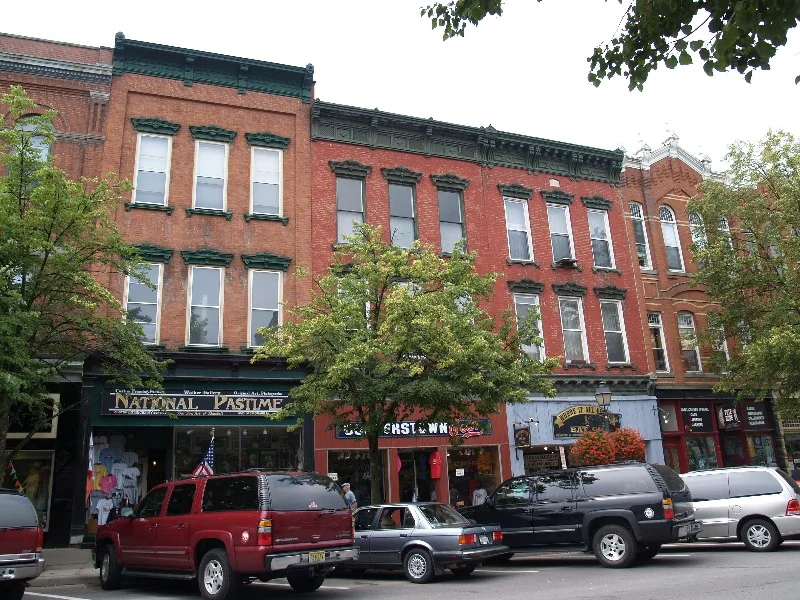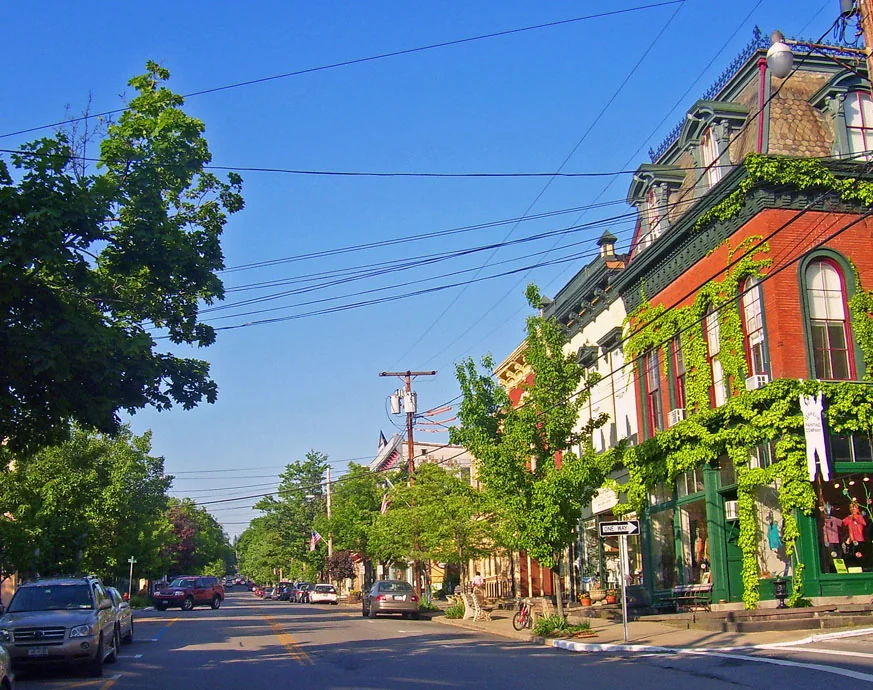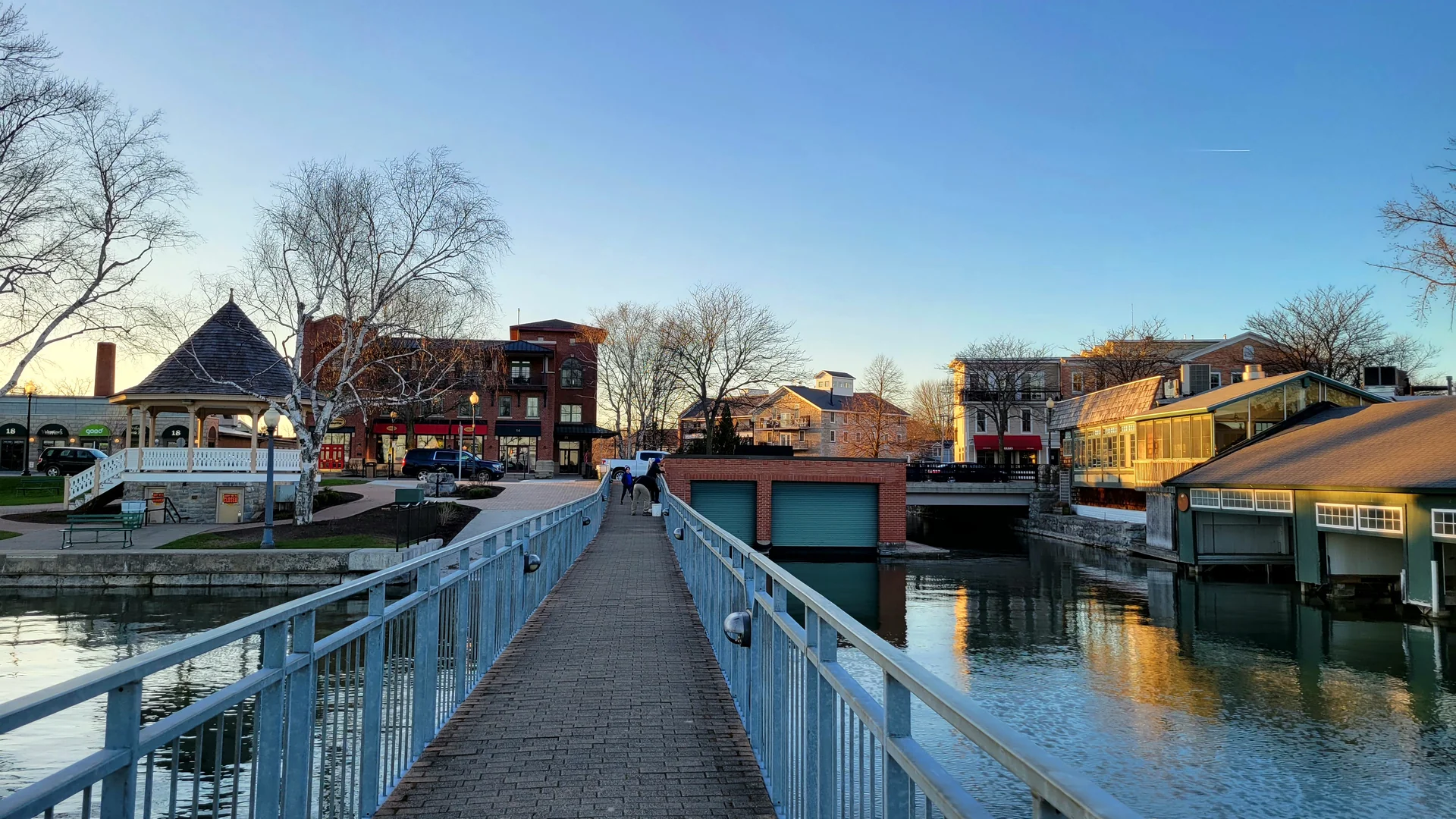Three Historic Towns in New York State: Exploring Colonial and Early American Heritage
New York State holds some of America's most remarkably preserved colonial and early American heritage, but many travelers overlook the treasure trove of histori

New York State holds some of America's most remarkably preserved colonial and early American heritage, but many travelers overlook the treasure trove of historic towns scattered throughout its scenic landscapes. Three exceptional communities stand out for their authentic preservation of different eras and aspects of American history: Cooperstown, Cold Spring, and Skaneateles. Each offers visitors a genuine glimpse into the colonial period and early republic, with well-maintained architecture, compelling historical narratives, and immersive experiences that bring the past to life.
New York's position as a gateway to the American frontier and a crucial corridor between New England and the expanding western territories created numerous settlements that played pivotal roles in the nation's development. Unlike many historic towns that have been heavily commercialized or modernized beyond recognition, these three communities have maintained their authentic character while providing excellent access to their historical treasures.
Cooperstown represents the literary and cultural aspirations of early America, founded by a prominent judge and immortalized by his novelist son. Cold Spring embodies the industrial transformation that powered American expansion, with its foundries and mills supplying the growing nation's infrastructure needs. Skaneateles exemplifies the pastoral ideal of 19th-century American communities, complete with Underground Railroad connections and pristine lakeside Victorian elegance.
Each town rewards visitors with distinct experiences: wandering tree-lined streets where the architecture tells stories of prosperity and growth, exploring museums that preserve crucial artifacts and narratives, and discovering the human stories that shaped American identity. The authentic preservation of these communities, combined with their accessibility and wealth of historical resources, makes them ideal destinations for understanding how colonial settlements evolved into the foundations of modern America.
Cooperstown
Founded in 1786 by William Cooper, a prominent land speculator and judge, Cooperstown emerged as one of central New York's most significant early settlements. William Cooper's vision extended far beyond simple land development – he aimed to create a model community that would demonstrate American democratic ideals and economic opportunity. His systematic approach to settlement, including providing initial supplies to new residents and establishing essential services, created a template for successful frontier community building.
The town gained literary immortality through William's son, James Fenimore Cooper, whose Leatherstocking Tales transformed the surrounding landscape into the mythical setting for some of America's earliest novels. Walking through Cooperstown today, visitors can easily envision the frontier world Cooper described, as the stunning vista of Otsego Lake stretches northward, framed by rolling hills that have changed little since the 18th century.
The National Baseball Hall of Fame, established in 1939, draws millions of visitors, but Cooperstown's historical significance extends far beyond baseball lore. The Fenimore Art Museum houses one of the nation's finest collections of American folk art, including extensive Native American artifacts that tell the story of the region's original inhabitants and their interactions with European settlers. The museum's collection of 19th-century paintings provides vivid documentation of how Americans viewed their expanding nation during this crucial period.
The Farmers' Museum offers immersive experiences in 19th-century rural life, with authentic buildings relocated from throughout central New York. Visitors can observe traditional craftspeople demonstrating blacksmithing, pottery making, and other essential skills that sustained early American communities. The museum's village setup allows families to experience the rhythms of daily life in the early 1800s, from morning farm chores to evening entertainment.
Cooperstown's architectural heritage remains remarkably intact, with Federal and Greek Revival buildings lining the tree-shaded streets. The Otesaga Resort Hotel, built in 1909, maintains the grandeur of the Gilded Age while providing modern accommodations. Many visitors find that staying in the historic district enhances their appreciation of the town's evolution from frontier settlement to cultural destination.
Planning considerations include seasonal variations – summer brings crowds due to baseball tourism, while spring and fall offer more intimate experiences with equally beautiful scenery. The town's compact size makes walking the preferred transportation method, and most historical sites cluster within easy walking distance of each other. Admission to major museums typically ranges from $12-15 for adults, with combination tickets providing savings for multiple attractions.
Cold Spring
Cold Spring's strategic location along the Hudson River, just fifty miles north of New York City, positioned it perfectly for the industrial transformation that defined 19th-century America. The town's history intertwines with the broader narrative of American military and industrial development, particularly through the West Point Foundry, which operated from 1817 to 1911 and produced some of the most important military equipment in American history.
The West Point Foundry's significance cannot be overstated – it cast the massive chains that stretched across the Hudson River during the Revolutionary War to prevent British naval advancement, and later produced the Parrott rifle, a revolutionary cannon design that became crucial during the Civil War. The foundry also manufactured the ironwork for numerous iconic American structures, including parts of the U.S. Capitol building and the High Bridge in New York City.
Today, visitors can explore the West Point Foundry Preserve, where interpretive trails wind through the ruins of the massive industrial complex. The preserved blast furnace and remaining foundations provide tangible connections to the thousands of workers who labored here during America's industrial expansion. The preserve's trails offer spectacular views of the Hudson River and West Point across the water, creating opportunities to contemplate how geography shaped American military strategy.
Cold Spring's Main Street represents one of New York's best-preserved collections of 19th-century commercial architecture. The Victorian-era buildings house antique shops, restaurants, and galleries that maintain the street's historical character while serving contemporary visitors. The building facades, with their detailed cornices and period storefronts, create an authentic atmosphere that transports visitors back to the height of the town's prosperity.
The Putnam History Museum occupies the former site of the West Point Foundry School, established by Gouverneur Kemble to educate foundry workers' children. The museum's exhibits detail not only the industrial history but also the social dynamics of a 19th-century industrial community, including the diverse immigrant populations that provided the skilled labor essential to the foundry's success.
Boscobel House and Gardens, located just north of Cold Spring, offers insight into Federal-period domestic life among the wealthy merchant class. The restored mansion, with its exceptional decorative arts collection and manicured gardens overlooking the Hudson, demonstrates the lifestyle that industrial prosperity made possible. The house's construction techniques and interior design reflect the sophisticated tastes that emerged in post-Revolutionary America.
Cold Spring provides excellent access via Metro-North Railroad from New York City, making it popular for day trips. Weekend visits require advance reservations at restaurants and accommodations. The steep streets leading up from the river provide excellent views but require comfortable walking shoes. Parking can be challenging during peak seasons, making train travel particularly attractive for visitors from the metropolitan area.
Skaneateles
Skaneateles embodies the ideal of the 19th-century American lakeside community, with its pristine setting on the shores of one of the Finger Lakes' most beautiful bodies of water. Founded in the early 1800s, the town developed as both a transportation hub along the canal system that connected central New York to broader markets and as a summer retreat for wealthy families seeking respite from urban life.
The town played a significant but often overlooked role in the abolitionist movement and Underground Railroad operations. The Seward House Museum in nearby Auburn tells part of this story, but Skaneateles itself harbored numerous safe houses and sympathetic residents who assisted freedom seekers traveling north to Canada. The community's Quaker population, along with other religious groups committed to social reform, created a network of support that operated effectively throughout the antebellum period.
Genesee Street, as viewed from the Skaneateles lake pier, presents one of New York's most photographed streetscapes, with its collection of Greek Revival and Victorian buildings rising gracefully from the lakeshore. The architectural harmony results from the town's concentrated period of prosperity during the mid-19th century, when the completion of transportation networks brought both commercial success and wealthy summer residents seeking elegant accommodations.
The Skaneateles Historical Society maintains several properties that illuminate different aspects of local history. The Creamery Museum occupies a restored 1899 creamery building and explains the agricultural economy that sustained the community through changing times. Interactive exhibits demonstrate butter and cheese-making processes while highlighting the cooperative movement that helped small farmers compete in expanding markets.
Skaneateles Lake itself provides crucial context for understanding the community's development. The lake's exceptional water quality – it serves as a primary water source for Syracuse – prevented the heavy industrial development that transformed many other Finger Lakes communities. This environmental protection preserved both the natural setting and the historic architecture that depended on the lake's scenic beauty for its economic value.
The town's summer cottage architecture represents a distinctive regional style that emerged as wealthy families from Syracuse, Rochester, and other growing cities established seasonal residences. Many of these substantial homes remain in family hands, creating continuity between past and present that enhances the authentic historical atmosphere.
Mid-Lakes Navigation offers steamboat tours that recreate the transportation experience of 19th-century visitors while providing perspectives on the lake's role in regional development. The tours operate seasonally from May through October, with prices starting around $25 for adults. The company also provides dinner cruises and special themed excursions that combine historical interpretation with scenic beauty.
Skaneateles Country Club, established in 1901, occupies grounds that exemplify the Gilded Age transformation of rural landscapes into recreational spaces for urban elites. While private, the club's buildings and grounds represent important examples of early 20th-century resort architecture that influenced community development throughout the Finger Lakes region.
Modern visitors find Skaneateles particularly appealing during shoulder seasons when the summer crowds disperse but the weather remains pleasant for outdoor activities. The town's restaurants, particularly those with lakefront locations, serve regional specialties including locally sourced ingredients that connect contemporary dining to the area's agricultural heritage.





